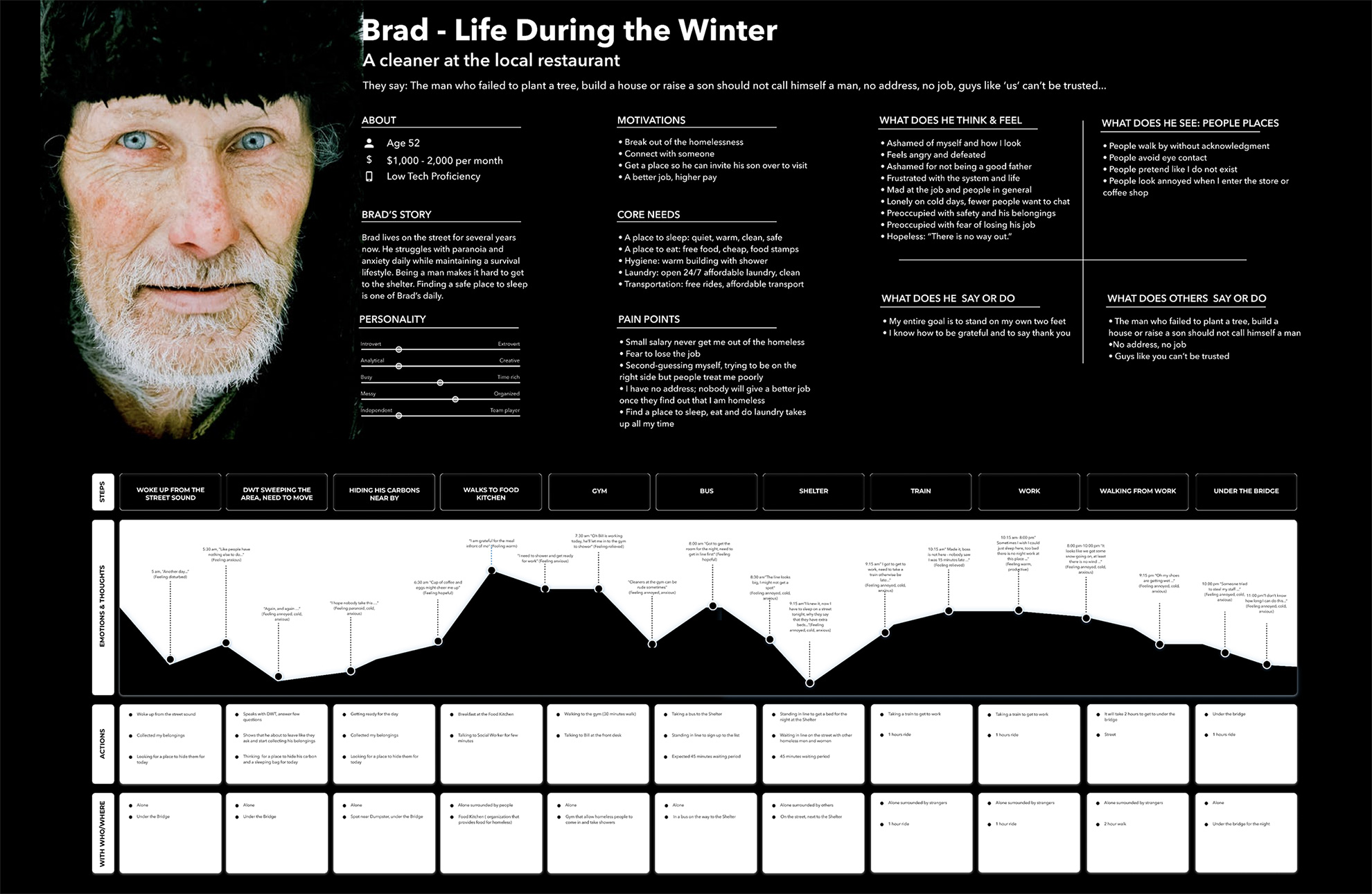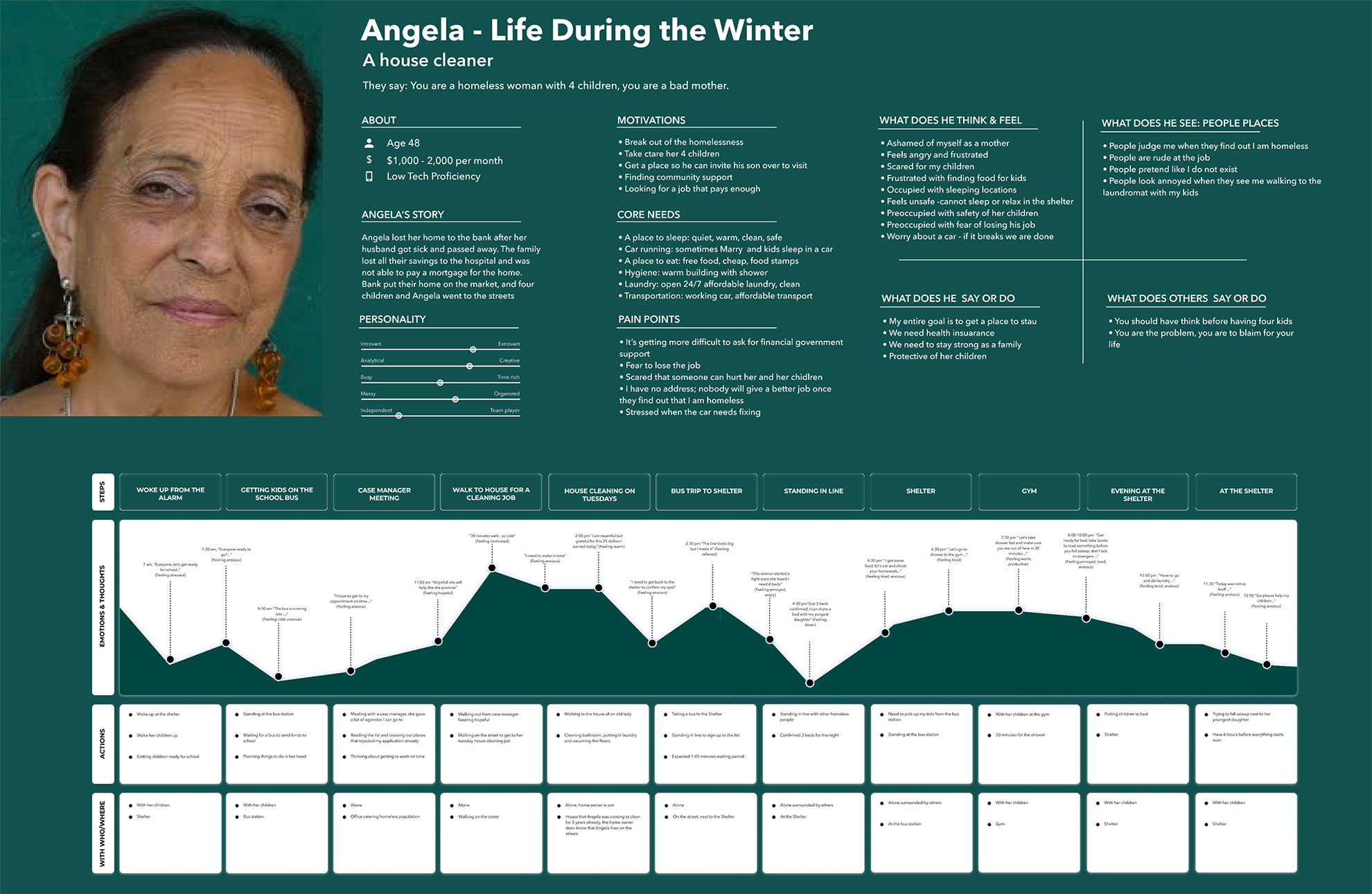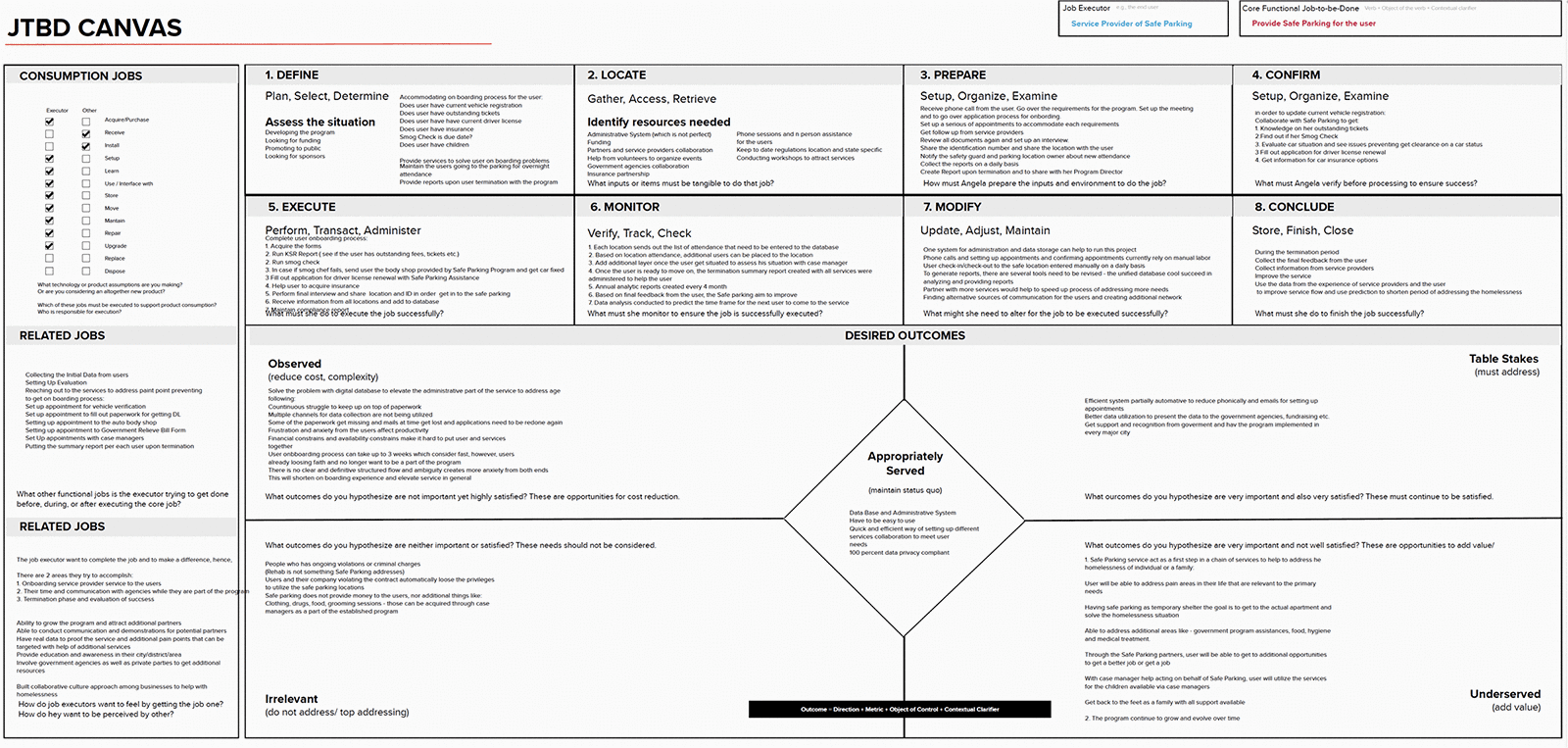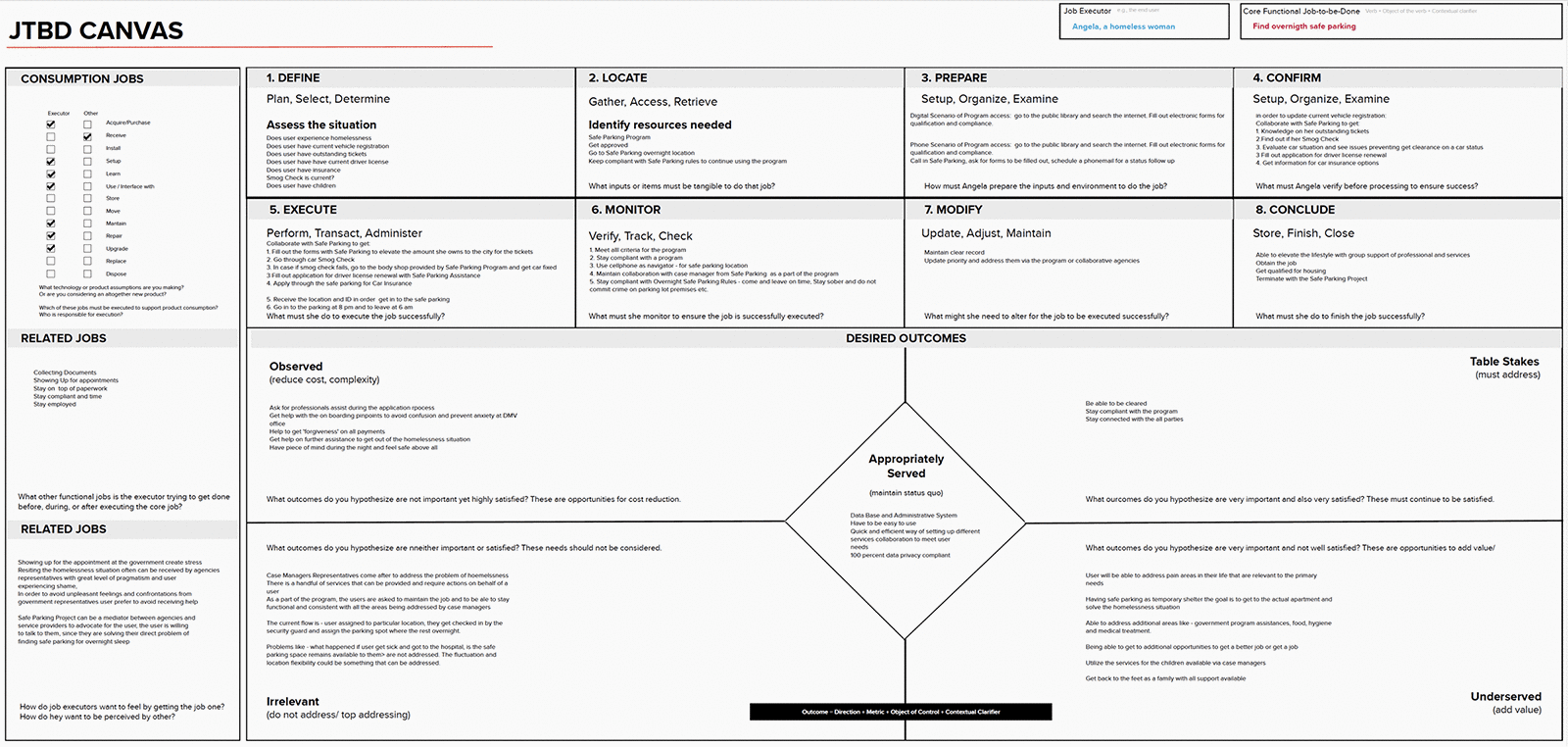
Overview
Design for the Homeless (D4H) is a program that gives designers from all disciplines an opportunity to join a team and contribute a small percentage of their professional time to researching, conceptualizing, and designing solutions that improve the lives of people experiencing homelessness.
Role
UX Researcher
Client
Responsibilities
- User Interviews
- Personas & Empathy Maps
- Customer Experience Journey & JBTD
- Design Strategy
- Meetups
Timeline
6 months
Research
After contextual research conducted by fellow team members, D4H teams began doing user research based on their own geographical area in order to gain empathy and identify the scope of issues homeless men and women face daily. I conducted and transcribed 25 hours of in-person interviews. Based on the research findings, I was able to set an example for critical deliverables: User Personas, Empathy and User Journey Maps, and JBTD canvases. Additionally, I provided assistance to other group members, and helped out with several meetups in the Los Angeles area.
Using a card sorting technique, I identified primary and secondary needs, as well as areas that could be addressed in more detail through further research and design.
Based on research and other members’ findings, I proposed the following areas to be targeted via user experience and product design:
| Problem | Teams that work on the subject |
|---|---|
| Shelter | Shelter, Vehicle as Shelter - Los Angeles |
| Information/Communication | San Francisco |
| Government Assistance | European team |
| First week of homelessness | San Francisco |
| Sanitation & Hygiene | San Diego |
| Food | San Francisco |
I put together content for a presentation with general information about D4H and opened a group for public meetups. The next step was to use the JTBD framework to analyze businesses that address vehicles as a shelter problem in Los Angeles. I created two canvases that reflected the user and business sides of such agencies. Further research put me in touch with Safe Parking LA and five other agencies that work with the homeless population to provide safe, patrolled parking locations for overnight sleep.
Vehicle as shelter JTBD canvases:
All work and communication were done using MURAL. To understand the user experience in depth from both the business and user perspectives, we utilized the canvas from Jobs to Be Done: A Roadmap for Customer-Centered Innovation (Amacom, 2016).
Next Step
My goal was to conduct at least six meetups in the Los Angeles area to brainstorm and create various concepts on the subject of "Vehicle as Shelter." We learned about "Green Streets," a government program that highlights areas permitted for overnight vehicle parking in Los Angeles. However, due to inconsistent laws and varying regulations in the state of California, we could not optimize this option and translate it to the mobile application.
Working on this project broadened my knowledge of homelessness in Los Angeles, and connected me with multiple agencies that are working diligently to solve the city’s homeless problem. I enjoyed the time I spent with people who need help from society, and appreciate their inner strength, wisdom, and sense of humor. As a result, I took on the Safe Parking LA Automation project that you can read about in my portfolio.




